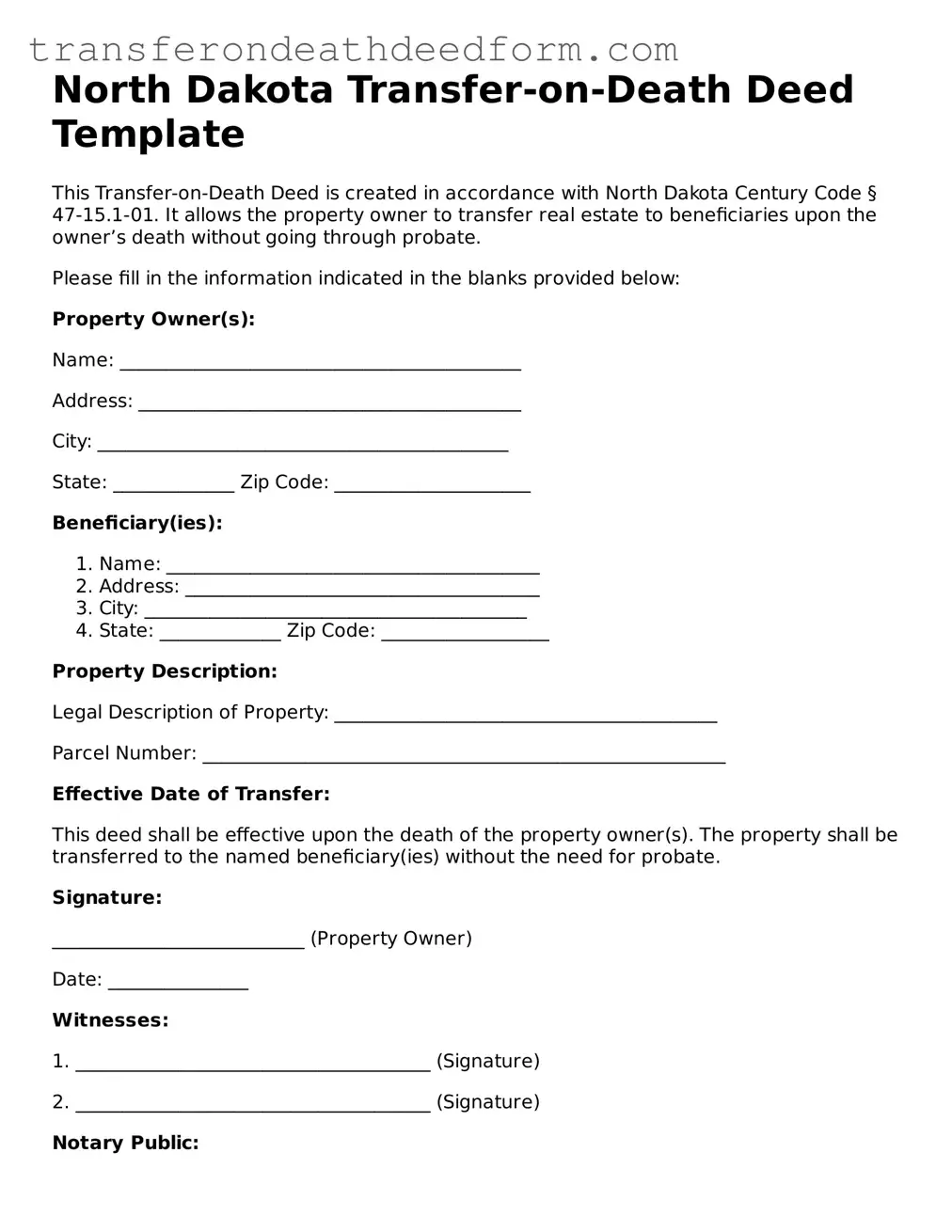North Dakota Transfer-on-Death Deed Template
This Transfer-on-Death Deed is created in accordance with North Dakota Century Code § 47-15.1-01. It allows the property owner to transfer real estate to beneficiaries upon the owner’s death without going through probate.
Please fill in the information indicated in the blanks provided below:
Property Owner(s):
Name: ___________________________________________
Address: _________________________________________
City: ____________________________________________
State: _____________ Zip Code: _____________________
Beneficiary(ies):
- Name: ________________________________________
- Address: ______________________________________
- City: _________________________________________
- State: _____________ Zip Code: __________________
Property Description:
Legal Description of Property: _________________________________________
Parcel Number: ________________________________________________________
Effective Date of Transfer:
This deed shall be effective upon the death of the property owner(s). The property shall be transferred to the named beneficiary(ies) without the need for probate.
Signature:
___________________________ (Property Owner)
Date: _______________
Witnesses:
1. ______________________________________ (Signature)
2. ______________________________________ (Signature)
Notary Public:
State of North Dakota, County of _____________________
Subscribed and sworn before me this _____ day of _______________, 20__.
__________________________ (Notary Public Signature)
My Commission Expires: _______________
